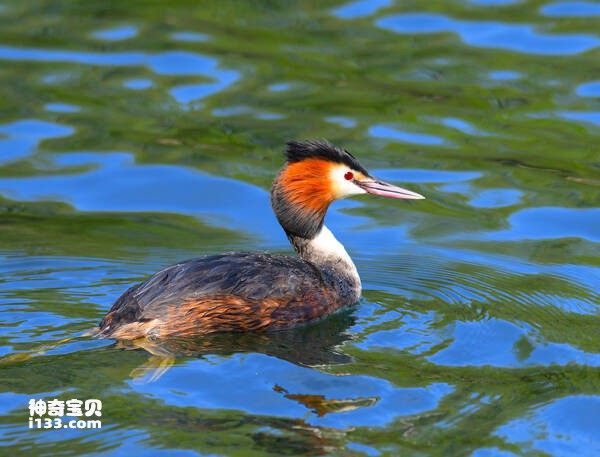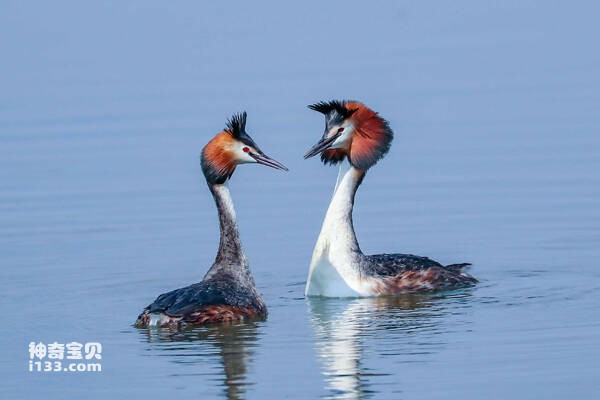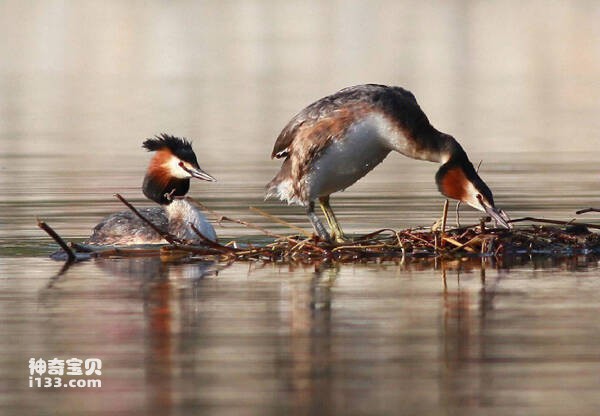Podiceps cristatus
IUCN
LCBasic Information
Scientific classification
- name:Podiceps cristatus
- Scientific Name:Podiceps cristatus,Great Crested Grebe
- Outline:Waterfowl
- Family:
Vital signs
- length:45-58CM
- Weight:425-1000g
- lifetime:No textual research information is available
Feature
It is the largest grebe of all
Distribution and Habitat
Place of origin: Afghanistan, Albania, Algeria, Angola, Armenia , Australia, Austria, Azerbaijan, Bahrain, Bangladesh, Belarus, Belgium, Bhutan, Bosnia and Herzegovina, Botswana, Bulgaria, China, Democratic Republic of the Congo, Croatia, Cyprus, Czech Republic, Denmark, Egypt, Estonia, Ethiopia, Finland, France, Gabon, Georgia, Germany, Greece and Hungary Jamaica, India, Iran (Islamic Republic of), Iraq, Ireland, Israel, Italy, Japan, Jordan, Kazakhstan, the Republic of Korea, Kenya, the Republic of Korea, Kuwait, Kyrgyzstan, Latvia, Lebanon, Libya, Liechtenstein, Lithuania, Luxembourg, Macedonia, Malta, Moldova, Monaco, Mongolia, Montenegro, Morocco, Mossan Bic, Myanmar, Namibia, Nepal, Netherlands, New Zealand, Norway, Pakistan, Poland, Portugal, Qatar, Romania, Rwanda, SAN Marino, Saudi Arabia, Serbia, Slovakia, Slovenia, South Africa, Spain, Sweden, Switzerland, Syrian Arab Republic, Tajikistan, United Republic of Tanzania, Thailand, Tunisia Nice, Turkey, Turkmenistan, Uganda, Ukr
Appearance
The crested grebe is a swimming bird. Also the largest of the Grebe species, the male is similar to the female, about the size of a duck, with a long, pointed beak and a black line stretching from the corner of the mouth to the eye. It has a long neck and stands upright, usually in a vertical position with the water.
Xia Yu is black from forehead to crown. The feathers lengthen on both sides of the head, forming two long black crowns at the back of the head. The black crown feathers are flanked by a ruff formed by long feathers from the ear region to the throat. It is brown-maroon at the base and black at the end. The rest of the head, face and chin are white. The hindneck, back, waist and inner shoulder feathers are black brown, the outer shoulder feathers, the wing edge cover feathers and the upper wing small cover feathers are white, the primary and tertiary flight feathers are also black brown, and the inner tip of the primary fly feathers is white; The secondary feathers are al
Details
Great Crested Grebe (Podiceps cristatus) has three subspecies.

The earliest migration of the crested grebe to the northeast breeding grounds in the spring is in mid-late March, with large numbers appearing from mid-July to late April. The time to move away from the breeding grounds in autumn is mid-October, and sometimes as late as early November. Migration is often in pairs or small groups. Often in pairs and small groups. Move around in open water. Good at swimming and diving. Keep your neck straight up and perpendicular to the surface of the water. Frequent diving activities, each dive time more than 20-30 seconds. It can stay underwater for up to 50 seconds. Fast flight, strong wings, but difficult to walk on the ground. It feeds mainly on a variety of fish. Also eat insects, insect larvae, shrimp, raku, crustaceans, mollusks and other aquatic invertebrates. Occasionally they also eat small amounts of aquatic plants.

The breeding season for crested grebe is from May to July. They usually nest in reeds and grasses not far from the surface of the water. Nest in pairs or in small groups. The nest is a floating nest, floating on the water. Usually bend part of the reed or water grass for the nest base, and then use the reed and water grass piled together. The nest is circular, like a top cone. The top is slightly dented. The upper outer diameter of the nest is 26-30 cm, the inner diameter is 20-28 cm, the lower diameter is 60-69 cm, and the height of the nest is 52-62 cm. The surface part of the nest is 5-9 cm, the depth of the nest is 3-4 cm; Eggs are laid from mid-May to late May. Each litter usually lays 7-5 eggs. The size is 31.5-36.5×51.5-55.0 mm, with an average of 34.3×53.4 mm. The weight is 30-33.5 grams, with an average of 32.2 grams. The eggs are pure white when they are first laid, and gradually turn dirty white after hatching. The egg is oval in shape. Incubation begins after the first egg is laid. The incubation takes place between male and female birds. Young birds become young. Soon after hatching, they can swim and hide in the water.

Listed on the International Union for Conservation of Nature Red List of Threatened Species (IUCN) 2019 ver 3.1 - Not Threatened (LC).
It was included in the List of Land Wild Animals under State Protection that are beneficial or have important economic and scientific research value (Item 5) issued by the State Forestry Administration of China on August 1, 2000.
Protect wild animals and eliminate wild meat.
Maintaining ecological balance is everyone's responsibility!








